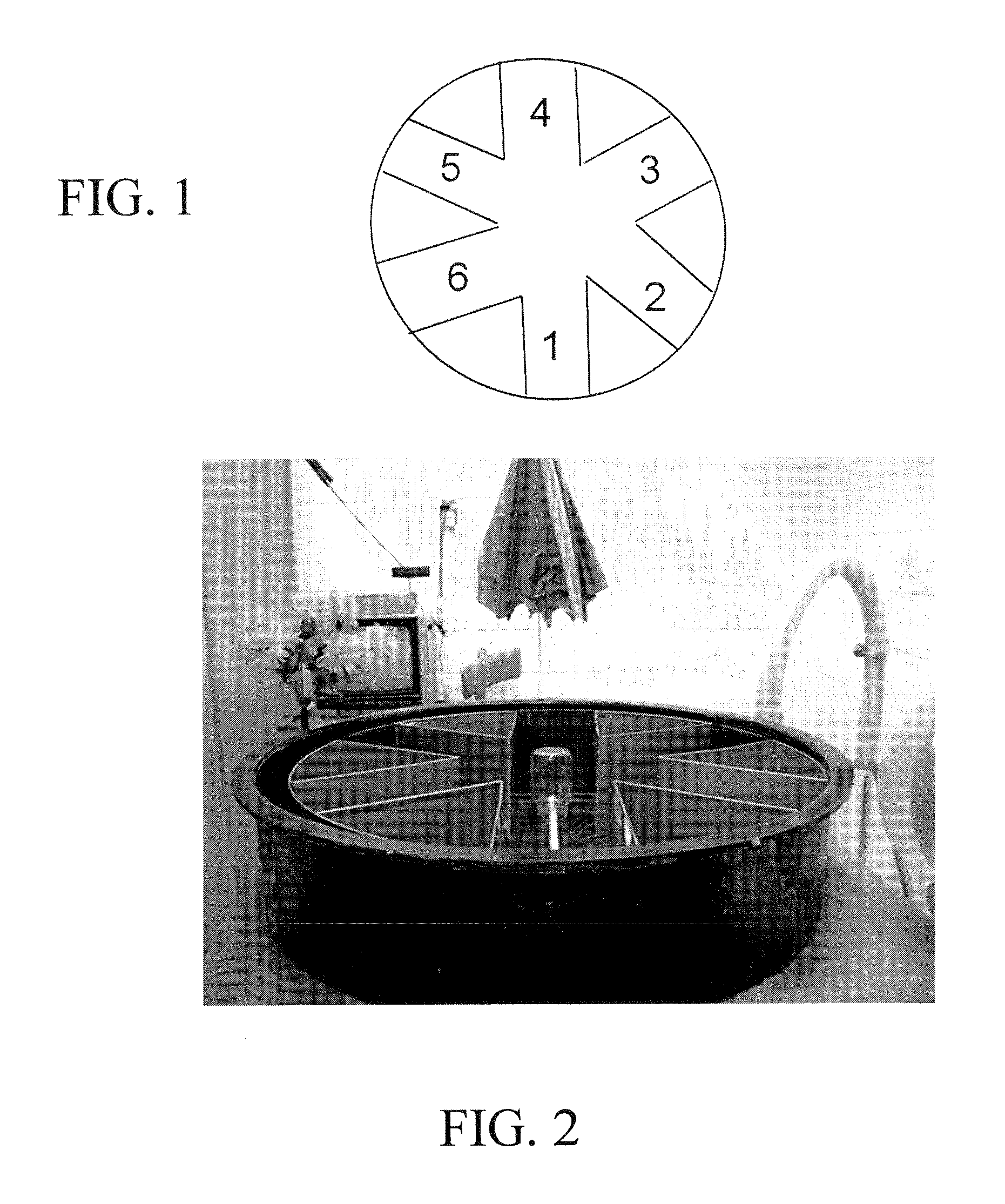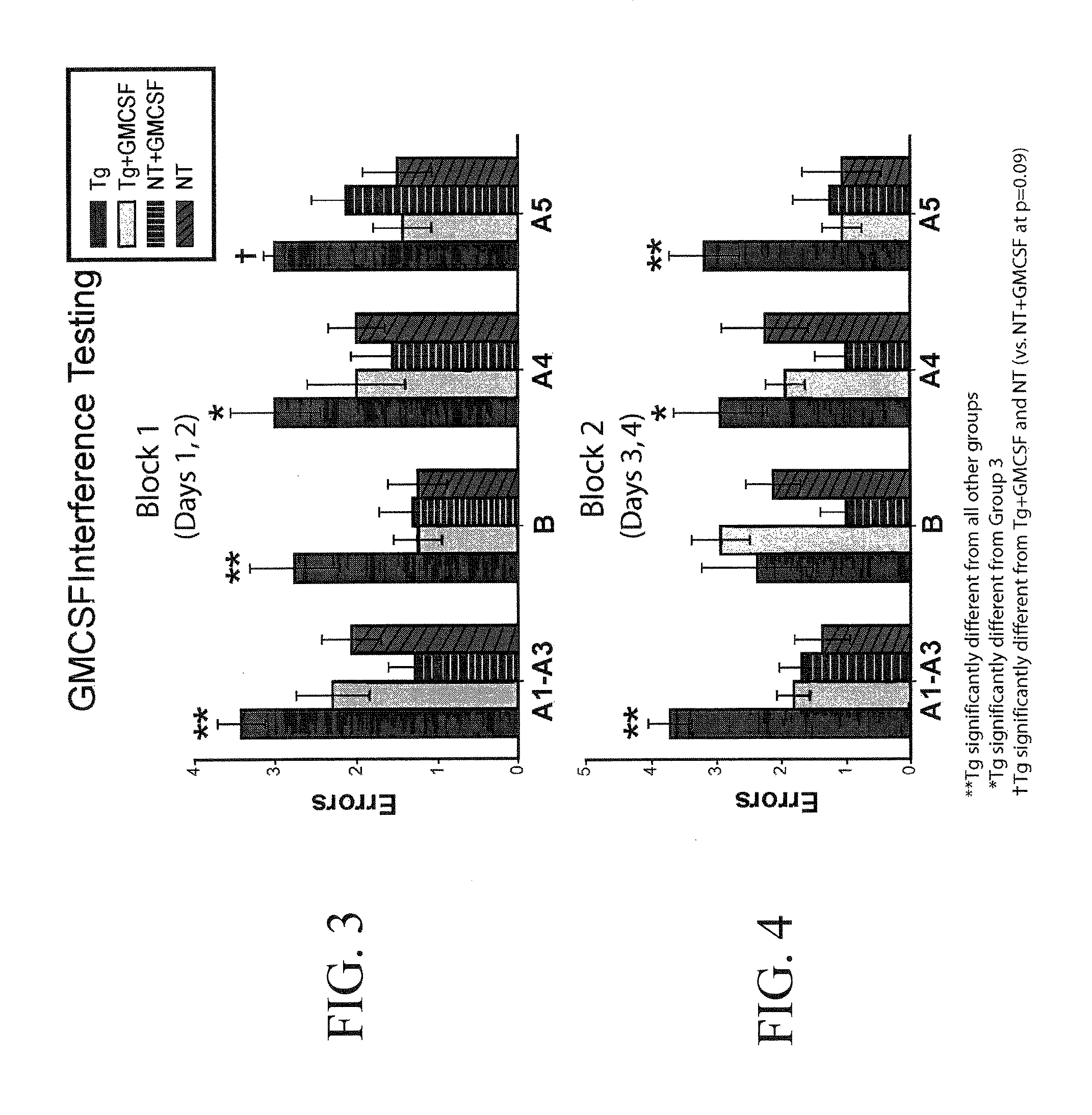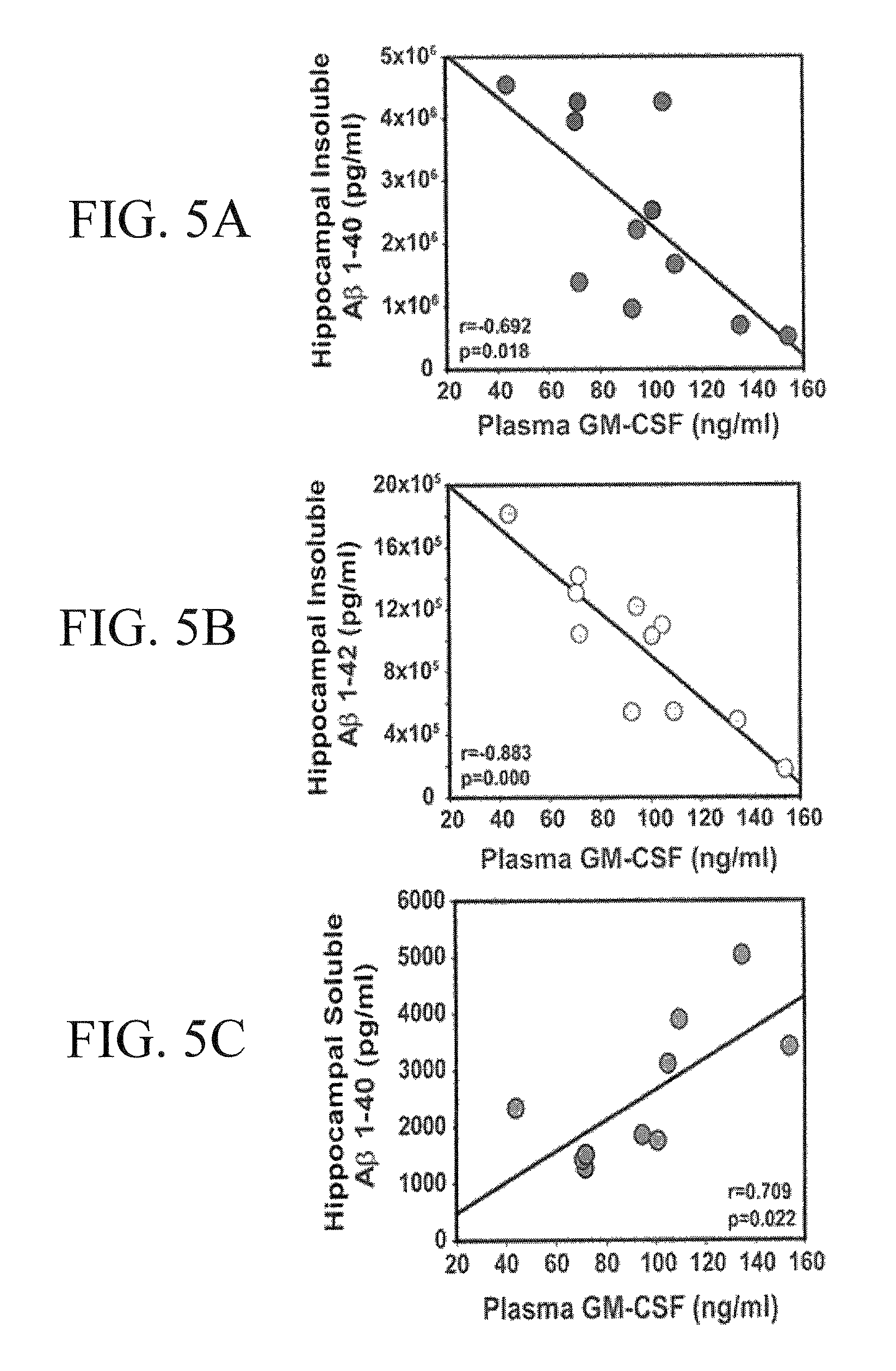Methods of treating cognitive impairment
a cognitive impairment and treatment method technology, applied in the field of cognitive impairment treatment, can solve the problems of memory loss progressing to such an extent that normal independent function is impossible, complain of memory difficulty, and worsening memory loss, so as to reduce or inhibit the progression of cognitive impairment, increase the cognitive response in the brain, and reduce the effect of cognitive impairmen
- Summary
- Abstract
- Description
- Claims
- Application Information
AI Technical Summary
Benefits of technology
Problems solved by technology
Method used
Image
Examples
example 1
[0107]Radial Arm Water Maze Testing—Working (short-term) memory is evaluated in the radial arm water maze (RAWM) task, using the same pool that was involved in both Morris water maze and platform recognition testing. This task also uses the same clear platform and visual cues as in Morris maze testing.
[0108]For the radial arm water maze task of spatial working memory, an aluminum insert was placed into a 100 cm circular pool to create 6 radially distributed swim arms emanating from a central circular swim area. An assortment of 2-D and 3-D visual cues surrounded the pool. The number of errors prior to locating which one of the 6 swim arms contained a submerged escape platform (9 cm diameter) was determined for 5 trials / day over 8 days of pre-treatment testing and 4 days of post-treatment testing. There was a 30-min time delay between the 4th trial (T4; final acquisition trial) and 5th trial (T5; memory retention trial). The platform location was changed daily to a different arm, wit...
example 2
[0155]Alzheimer's disease is an age-related, progressive neurodegenerative disorder that presents as increasing decline in cognitive and executive function. Alzheimer dementia is associated with cerebrovascular dysfunction (Humpel and Marksteiner (2005)), extracellular accumulation of amyloid β (Aβ) peptides in the brain parenchyma and vasculature walls (Rhodin et al. (2000); Scheuner et al. (1996)) (predominantly Aβ1-42 and Aβ1-40), and intraneuronal accumulation of neurofibrillary tangles consisting of hyperphosphorylated Tau proteins (Rapoport et al. (2002)). Associated neuroinflammation may contribute to AD pathogenesis (Griffin et al. (1989); Akiyama et al. (2000); Wyss-Coray (2006)), as the inflammatory proteins apolipoprotein E (apoE) and a1-Antichymotrypsin (ACT) catalyze the polymerization of Aβ peptides into amyloid filaments in vivo and in vitro (Wisniewski et al. (1994); Ma et al. (1996); Potter et al. (2001); Nilsson et al. (2004); Padmanabhan et al. (2006)). However, N...
example 3
[0164]Four 10-12 month old PS / APP mice were stereotaxically injected with 5 μg rmGM-CSF into the hippocampus in one hemisphere of the brain and with vehicle (aCSF: artificial cerebrospinal fluid) contralaterally. Mice were euthanized and saline-perfused 7 days later, fixed with 10% Formalin, and either cryosectioned at 14 μm or paraffin-embedded and sectioned at 5 μm. Standard immunohistochemical techniques used 6E10, and MabTech's anti-Aβ antibodies to label amyloid deposition. Microscopy and image processing were performed on a Zeiss ImagerZ1 using Axiovision software. ImageJ was utilized to quantify amyloid deposition.
[0165]Eleven 10-12 month old APP mice and seventeen non-transgenic age-matched controls were cognitively pretested by RAWM, a working memory paradigm. Five APP mice and 9 NT mice were semi-randomly chosen for sub-cutaneous injections (5 μg / day) of rmGM-CSF. The other 6 APP and 8 NT mice received daily injections of vehicle (saline). There was a 15 day rest period af...
PUM
| Property | Measurement | Unit |
|---|---|---|
| weight | aaaaa | aaaaa |
| weight | aaaaa | aaaaa |
| diameter | aaaaa | aaaaa |
Abstract
Description
Claims
Application Information
 Login to View More
Login to View More - R&D
- Intellectual Property
- Life Sciences
- Materials
- Tech Scout
- Unparalleled Data Quality
- Higher Quality Content
- 60% Fewer Hallucinations
Browse by: Latest US Patents, China's latest patents, Technical Efficacy Thesaurus, Application Domain, Technology Topic, Popular Technical Reports.
© 2025 PatSnap. All rights reserved.Legal|Privacy policy|Modern Slavery Act Transparency Statement|Sitemap|About US| Contact US: help@patsnap.com



